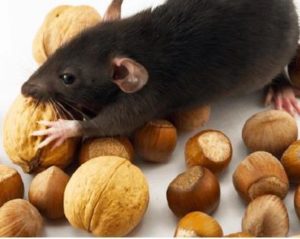National Food Safety Education Month
 September is National Food Safety Education Month. With an estimated 128,000 hospitalizations, and 3,000 deaths each year from eating contaminated food knowing how to prevent foodborne illness is important to professionals and consumers. There are many resources readily available for food safety education but not everyone may know about the availability or the importance. Each week in September many websites will release hot topic information. The resources are typically available in downloadable formats to share with employees. These documents are an excellent source of news and can be posted on bulletin boards, emailed to employees, or shared in “toolbox” style talks to convey the information and contribute to a food safety culture environment. National Food Safety Month was created by the National Restaurant Association in 1994. Specifically, it was created by the National Restaurant Association Educational Foundation (NRAEF), which is an educational non-profit run by the business association. With the “farm to table” approach, the topics available apply to farmers, producers, distributors, retailers, and consumers. Spreading the word about food safety can reduce the spread of foodborne illness and save lives.
September is National Food Safety Education Month. With an estimated 128,000 hospitalizations, and 3,000 deaths each year from eating contaminated food knowing how to prevent foodborne illness is important to professionals and consumers. There are many resources readily available for food safety education but not everyone may know about the availability or the importance. Each week in September many websites will release hot topic information. The resources are typically available in downloadable formats to share with employees. These documents are an excellent source of news and can be posted on bulletin boards, emailed to employees, or shared in “toolbox” style talks to convey the information and contribute to a food safety culture environment. National Food Safety Month was created by the National Restaurant Association in 1994. Specifically, it was created by the National Restaurant Association Educational Foundation (NRAEF), which is an educational non-profit run by the business association. With the “farm to table” approach, the topics available apply to farmers, producers, distributors, retailers, and consumers. Spreading the word about food safety can reduce the spread of foodborne illness and save lives.
Additional information can be found via the CDC Website.
Submitted by: Rich Gibson ACE, CFSQA
The Oriental Cockroach

Order: Blattodea Family: Blattidae Genus: Blatta Linnaeus Species: Blatta orientalis Linnaeus
Blatta orientalis Linnaeus, the Oriental Cockroach, is believed to be of African origin despite its name, the oriental cockroach is one of the larger species of cockroach. This species of cockroach has a shiny black to a dark reddish-brown color. Adult male and female cockroaches are both large but are quite different in appearance. Growing to only 25 mm in length, the smaller males have shortened, three-quarter-length wings. As a result, the last few abdominal segments of their bodies are exposed. In comparison, female oriental roaches reach a length of 32 mm and have no wings. In place of wings, they have large wing pads that shelter the first few segments of their bodies. While differing in appearance, neither can fly. All cockroach species are considered vectors for disease and can transmit everything from E. Coli to Salmonella and can cause foodborne illness though these transmissions.
The roaches are more active during the warmer months of the year, oriental cockroaches may be seen outside near moist gutters, around landscaping beds, and coming in and out of sewers and storm drains during the night. During the day, Oriental cockroaches congregate in dark, moist and undisturbed spaces. While the Oriental Cockroach prefers the outdoors, these insects do find their way indoors and can often be found in damp basements, boiler rooms and the like.
While non-chemical control methods are ideal for control through sanitation, exclusion, and other modifications to the environment, there are times when chemical control is necessary. Dusts such as boric acid, silica aerogel, and diatomaceous earth (DE) can be applied to voids and other harborages such as cracks and crevices. An applicator should never apply dusts to wet or damp areas and dusts should be applied lightly because heavy deposits may repel cockroaches. Perimeter insecticide sprays may aid in the reduction of Oriental cockroaches entering buildings from the exterior. The insecticides should be applied as to create a continuous barrier around the structure. Use only those materials labeled for this type of application.
Submitted by: Rich Gibson, ACE, CFSQA
Pest Exclusion

A small nut roasting and candy packaging facility recently saw a dramatic increase in pest activity. This facility had strong mice pressure coming from the neighboring facilities in a shared building. The RK Environmental Services’ (RKE) Mid-Atlantic team planned and acted, in partnership with the client ownership, to get the rodent concerns under control.
The first stage of the project was to inspect the facility from top to bottom to identify points of entry and harborage. Once the areas of concern were identified, the team implemented a strong commercial intensive treatment utilizing rodenticide tracking powder, placed inside cinder block (CMU) walls and sealed. A tight mesh material was installed between the corrugated metal ceilings and the first layer of CMU block to exclude potential entry points. The RKE Team also installed 10” high sheet metal at the base of pertinent walls and the roofline, this smooth sheet metal prevents rodents from traveling vertically.
Paths of travel along I-beams were also found in the facility. In these active areas, cold-weather glue boards were installed for additional trapping and population reduction. The facility had observed some minor activity from Oriental cockroaches (see above). To combat these, the RKE team used a micro injector to apply a residual insecticide at the same time and applied the material at the roofline, where the roaches are known to congregate and travel. Upon completion of the commercial intensive project the client saw an almost immediate reduction in pest activity.
Take Away Tips:
• The client themselves may not be the root cause of activity, it could be the neighbors
• Sebum (greasy marks) was evident in vertical areas of the facility,
giving the details needed about the rodents traveling habits
• Always think of an area as a bubble. Don’t keep vision horizontal. Always look up when dealing with pest pressures
• Teamwork is essential in all aspects of pest management
Submitted by: Jeffrey Fitch
Service Supervisor
RK Environmental Services, LLC






